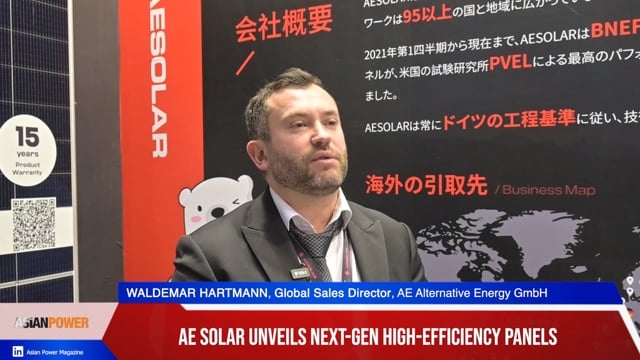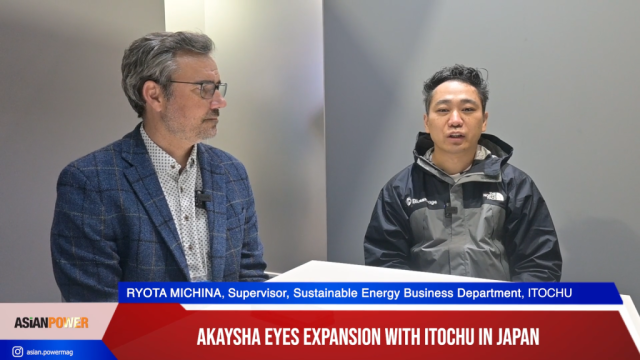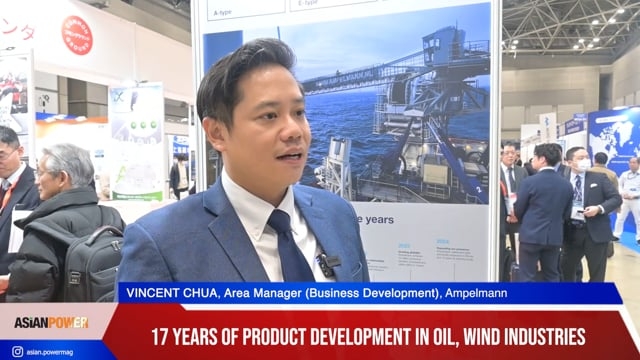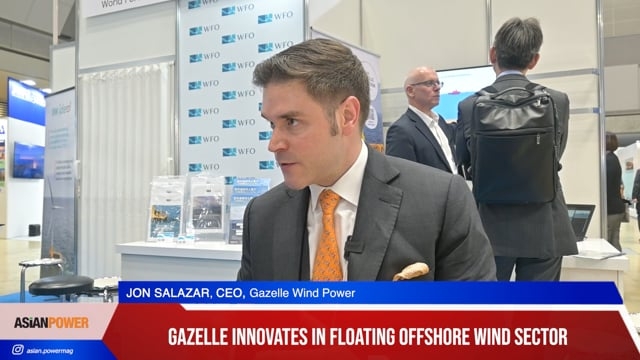What you need to know about utility-scale solar+storage in Southeast Asia
By Matthew HelingUtility-scale solar PV continues to grow at a breakneck pace, driven by continually falling prices, including 19.7 USD/MWh in the recent Mexico auction and 17.9 USD/MWh in the recent Saudi Arabia auction – price levels that were nearly inconceivable even just a few years ago.
However, while utility-scale solar PV’s rapid ascent is a positive for the environment and electricity consumers, the technology can represent a challenge for grid operators due to its intermittent nature and concentrated output profile. Some of the challenges that utility-scale solar PV can present include:
• Requirement for additional “back-up” capacity elsewhere in the system
• Curtailment of solar (or other plants)
• Negative power prices, in wholesale markets
• Local grid voltage issues
• Increased ramping of other, dispatchable generators
These challenges can be lessened, if not completely mitigated, by adding support systems to help balance the grid network activities. One solution is adding energy storage – for example, batteries – to the electricity system.
Battery storage is a well-documented, if still nascent, method for alleviating many of these challenges (among other services that energy storage can provide). Pumped storage is a proven and effective energy storage technology, but good sites can be difficult to find, and projects require many years to plan, develop, and construct. Although grid planners and operators in Southeast Asia acknowledge that battery storage can be valuable, many governments and electricity systems may not have the financial resources, technical capabilities, and/or market and regulatory mechanisms to support or encourage stand-alone battery deployment. Hence, other approaches are gaining attention and being considered to alleviate the challenges that come with increased use of intermittent renewables.
Emergence of “Solar+Storage”
One approach to doing this is to co-locate energy storage (e.g., batteries) with a utility-scale solar PV (or wind) plant – i.e., hybrid “Solar+Storage” plants, in order to enable the combined plant to operate more like a conventional plant. Adding storage to solar PV has multiple benefits, including:
• Reduces short-term intermittency. By storing solar output when the sun is shining, a battery can discharge during short-term solar output fluctuations (e.g., when a cloud passes over) to enable the combined plant to maintain stable output.
• Reduces longer-term intermittency. Depending on the size of the battery, the battery can also enable the combined plant to maintain output across longer time frames – for example, a series of cloudy days.
• Shifts output to more-valuable time. Peak system loads in many regions occur in the after the sun has weakened or set, when offices and industrial facilities still consume power, but residential evening loads are beginning to increase. A battery can enable a Solar+Storage plant to shift some portion of the combined plant’s output to later in the day, when the energy may be more valuable.
• Reduces need for balancing elsewhere in the electricity system. In general, the more reliable the output of a solar plant, the fewer the balancing (or “ancillary”) services are needed elsewhere in the electricity system.
Solar+Storage is already being pursued and even deployed, today. Several such systems are either in development or in operation in the United States and Australia, among other places around the world. Here in Southeast Asia, the Electricity Generating Authority of Thailand (EGAT) is pursuing the deployment of battery storage in close proximity to solar PV (and wind) systems, including :
• 3.5 MW PV + 4 MW / 1 MWh battery in Mae Hong Son
• 141 MW PV + 77.5 MW wind + 16 MW / 16 MWh battery in Chaiyabhumi
• 207 MW PV + 94.2 MW wind + 21 MW / 21 MWh battery in Lopburi
In Indonesia, Solar+Storage systems are being considered for various off-grid island applications (possibly with diesel generators) . The recent ‘ASEAN Solar + Energy Storage Congress & Expo
2017’ held in Manila, Philippines, last November brought together developers, policymakers, NGOs, and other entities from around the world to discuss developments and key issues surrounding Solar+Storage . And companies like Solar Philippines are aggressively touting the cost-effectiveness of Solar+Storage, even in the very near term.
Finally, Thailand’s current renewables program (the “SPP Hybrid Firm” program) actually encourages firm output that, for wind and solar, can only be achieved by co-locating batteries alongside the renewable technology: Thailand is in essence requiring that solar (or wind) plants take responsibility for their own intermittency.
Many benefits… and many complexities
While Solar+Storage offers many benefits relative to standard solar PV, adding batteries to a system also introduces additional complexity, cost, and other challenges. In general, the greater the amount of storage added to a renewables plant, the greater the benefits – but also, the greater the cost. Furthermore, storage has diminishing returns: while adding some amount of storage to a plant can produce significant benefits, as yet more storage is added, the incremental benefits tend to decrease.
Considering these tradeoffs, what is the optimal amount of storage to add when designing a Solar+Storage plant?
Sizing optimization can yield the most cost-effective balance of solar and storage in order to achieve the desired plant characteristics. But even so, determining what represents an “optimal” system is not necessarily clear, as what is “optimal” depends not only on the relative and absolute costs of the solar and storage components, but also on the purpose of the plant. Is the purpose just to flatten short-term fluctuations in the plant’s output? Or is it to enable it to maintain some standard output profile even during an extremely cloudy day with minimal direct sunlight? Or must it be able to provide a week of baseload power in the event of a natural disaster? Each purpose requires a different mix of solar modules and battery storage.
One vision is that Solar+Storage plants could ultimately replace conventional gas- or coal-fired power plants. What would a Solar+Storage plant designed to be “equivalent” to a conventional plant look like? And how would the costs compare?
Cost of Solar+Storage vs. Conventional Generation: Apples-to-Apples?
There’s a wealth of research that compares the cost of solar to that of conventional generation. Often, such comparisons are performed on the basis of levelized cost of energy (LCOE) – i.e., cost per unit of electricity delivered (e.g., USD/MWh). However, these are not “apples-to-apples” comparisons: a unit of electricity from a solar plant is not the same as a unit of electricity from a fossil-fuel plant, because the latter is dispatchable on demand.
However, by adding storage to a solar plant, the Solar+Storage plant becomes dispatchable (to varying degrees, depending on the amount of storage added). Accordingly, Pöyry has developed an approach to compare Solar+Storage to conventional plants in the Southeast Asia context on an arguably more-“apples-to-apples” basis. We designed three hypothetical Solar+Storage plants, each sized to produce output that is nearly equivalent to that of a particular generic type of conventional power plant in Southeast Asia:
• Peaker: Simple-cycle gas turbine operating 3 hrs/day (4-7pm), 6 days/wk
• Mid-merit: Combined-cycle gas turbine operating 10 hrs/day (10am-8pm) , 7 days/wk
• Baseload: Coal plant operating 24 hrs/day, 7 days/wk
For both Solar+Storage and conventional plants, we considered “Low”, “Central”, and “High” cost cases, with cost levels informed by Pöyry’s extensive experience with power projects across the region . We then performed a simple LCOE calculation to compare the LCOE of the three hypothetical Solar+Storage systems to the LCOE of the three conventional equivalents. While the results are based on a multitude of assumptions (as with any LCOE analysis), the findings give an indication of the relative cost-competitiveness of each technology.
Results of simple LCOE analysis – and key questions
Based on our analysis and the assumptions contained therein, in an “aggressive” case (i.e., assuming low costs for Solar+Storage and high costs for conventional plants and fuel), Solar+Storage may be cost-competitive as early as the next couple of years. This is noteworthy, as many consider Solar+Storage to still be many years away from being cost-competitive with conventional generation. On the other hand, using “conservative” assumptions (i.e. high Solar+Storage costs and low costs for conventional plants and fuel), Solar+Storage will not be competitive with conventional plants until many years from now.
In all cases, as solar module and battery costs continue to decline, Solar+Storage plants will be increasingly cost-competitive with conventional plants. The key factors that drive how the cost-competitiveness will evolve in the future include:
For Solar+Storage plants:
• What is true cost of Solar+Storage today? Costs of both the solar and battery component of the plant can vary widely, depending on the data source, the equipment provider, the location/jurisdiction in which the system is installed, and many other factors. And how will those costs evolve over time?
• How “equivalent” to conventional plants must the Solar+Storage plant output be? The more relaxed the requirements are for the output profile, the smaller the solar module and battery components can be, reducing the system cost.
• How will the cost of capital evolve over time? Will it decline as financiers become more comfortable with Solar+Storage plants?
For conventional plants:
• What is the current source of fuel, and what is the fuel cost? How will that evolve over time?
• How will possible future environmental regulations affect the cost of conventional options? Will additional emissions-control equipment be required? Will CO2 taxes or fees emerge? How will this impact the capital and operating costs of conventional options?
• How will the cost of capital evolve over time? Will it increase as financiers begin to see more market or other risk in relation to conventional generation?
Other unique aspects of Solar+Storage
In addition to the need to optimize system sizing, and the challenges when thinking about Solar+Storage cost there are a number of other issues that are unique to Solar+Storage.
Criticality of control system and control strategy. Unlike standalone PV systems, which simply produce output when solar resource is available, the operation of a Solar+Storage system is much more complex, and requires significantly more sophisticated controls and capabilities. For example, the system must be able to:
• Constantly and dynamically optimize storage operating decisions (charging, discharging) according to available solar resource, battery conditions, and, depending on the electricity system in which the system is operating, price signals
• Employ algorithms, forecasting, and statistical analysis to anticipate future conditions and determine optimal operating plan – and dynamically update when new data arrive
Safety. While battery safety is constantly improving, batteries still present safety risks that stand-alone PV does not.
Cybersecurity. Due to the importance of control systems and control strategies, cybersecurity is also more important than for a stand-alone PV system.
Summary
Solar+Storage is an emerging technology that holds tremendous promise for the Southeast Asia region for environmental, energy security, and – increasingly – economic reasons. And the continued cost declines in both solar PV and battery storage suggest that it is only a matter of time before Solar+Storage becomes a natural consideration when planning for the region’s increasing energy needs.
At the same time, adding energy storage to an otherwise relatively simple technology produces a new set of complexities, uncertainties, and questions. However, with improved understanding of the technologies themselves and the surrounding power systems to which the plants are connected, it is possible to see a future in which battery-enabled renewable energy truly is the future – whether that is right around the corner or still many years away.
























 Advertise
Advertise








